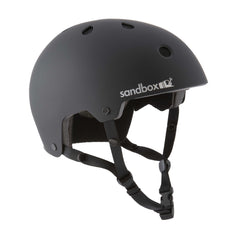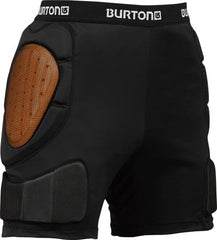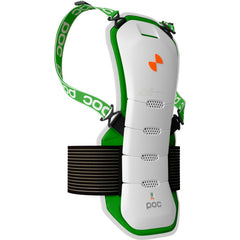
Protective Gear For Snowboarding
We get a lot customers asking us about protective gear, so we've decided to give you guys the word on the most effective products out there.
A recent question we received from a customer:
“As professional snowboarders, do you have any suggestions for purchasing protective gear for doing park features? For knee, chest, elbow, wrist, etc. Because there are tons of products out there and am having difficulty making my choices. I want to know, what are your preferences.”
Snowboarding has progressed very rapidly over the past couple of years and the rails and jumps are only getting bigger. Consequently, the slams are also getting gnarly. By wearing protective gear, you not only increase your confidence on rails and jumps, but you also save yourself from sitting out the entire season.
(Rider: Connor Palahickey. Filming/Edit: Adison MacDonald)
Helmet
A helmet is essential for most sports, and snowboarding is no exception. Helmets keep you safe from crashing on snow, ice (if you live in Alberta), rocks, trees, or any other object out there on the hill. Always wear a helmet to prevent serious head injuries. Period.
 The classic snowboard hemet: clean and simple.
The classic snowboard hemet: clean and simple.
Wrist Guards
During a fall, the first natural movement is to brace yourself with your hands, especially for beginners. Even minor wrist injuries can take about eight weeks to heal. So buying a good pair of wrist guards is never a bad idea when you’re new to snowboarding. As you become experienced, you’ll learn how to fall safely and slide with it, making wrist guards not as necessary.
 Wrist guards = a simple and effective way to strengthen your wrists.
Wrist guards = a simple and effective way to strengthen your wrists.
Pads
Knee pads, elbow pads, hip pads, and butt pads are all designed to keep you from seriously injuring or bruising yourself on the slopes. So for whatever area you prefer to be protected, get yourself a pad. They also make falls while learning new tricks a lot more comfortable.
 Impact shorts can be the difference between a close call and a broken tailbone.
Impact shorts can be the difference between a close call and a broken tailbone.
Back protectors
Back injuries are uncommon for snowboarders, but when they do occur, they can be severe and long lasting. Back protectors sometimes also come with shoulder padding, however they can seriously restrict your upper-body movement.
 No, not a military exoskeleton, a back protector.
No, not a military exoskeleton, a back protector.
Knee Pads
If you've already got an existing injury, knee pads are great. However, it also comes down to the function, fit, feel and freedom.
Knee pads functionally stop your knees getting bashed. To have the right fit so that they don't slide down your leg and need constant adjustment, you will need tight fitting knee pads which don't necessarily feel awesome.
Finally, there's the freedom. Knee pads restrict how much knee flexion you get, hindering your ability to lift your knees up in the air on jumps, or get a low turn without feeling a pinch. They really affect your freedom and range of movement in your knees.

You can work out whether you "kneed" these or not
Limitations
Remember, there’s always a downside, even on safety gear. It is important to know that the more protective gear you wear the more it will restrict your movement and affect your riding. So take the time to find the protective gear that fits best for you and your riding style.
Wrap It Up
To avoid unnecessary injuries, it's not only important to wear your safety gear, but also slowly progress your way into bigger features and harder tricks. Get comfortable with the motions, practice a lot and your confidence will increase. You need to be comfortable with every feature you hit, and if you aren't, back off until you are.
If you have any specific questions on safety gear, please reply in the comments to this blog and we’ll follow up with an answer.

 The classic snowboard hemet: clean and simple.
The classic snowboard hemet: clean and simple.  Wrist guards = a simple and effective way to strengthen your wrists.
Wrist guards = a simple and effective way to strengthen your wrists. Impact shorts can be the difference between a close call and a broken tailbone.
Impact shorts can be the difference between a close call and a broken tailbone.  No, not a military exoskeleton, a back protector.
No, not a military exoskeleton, a back protector.